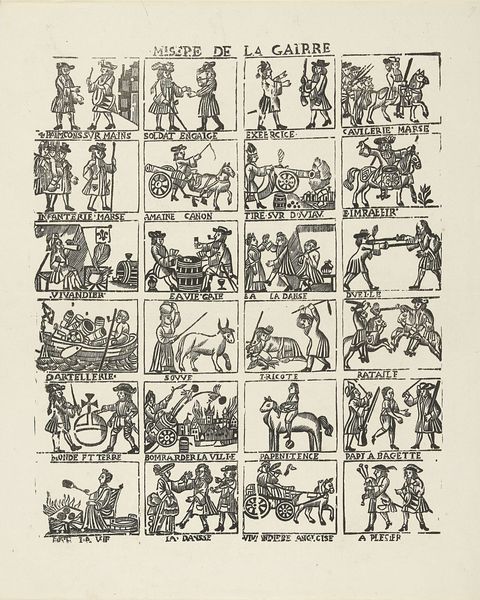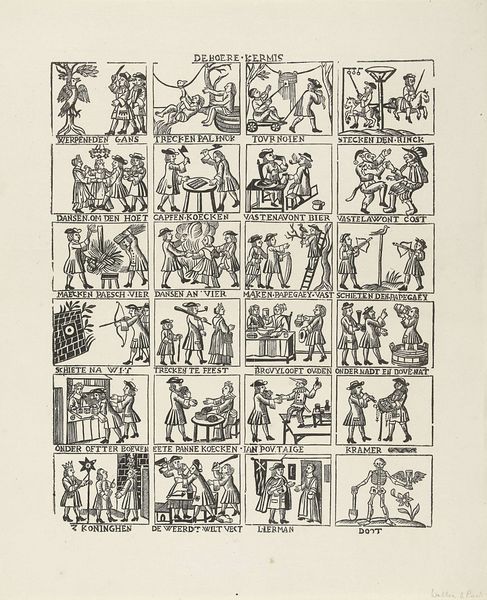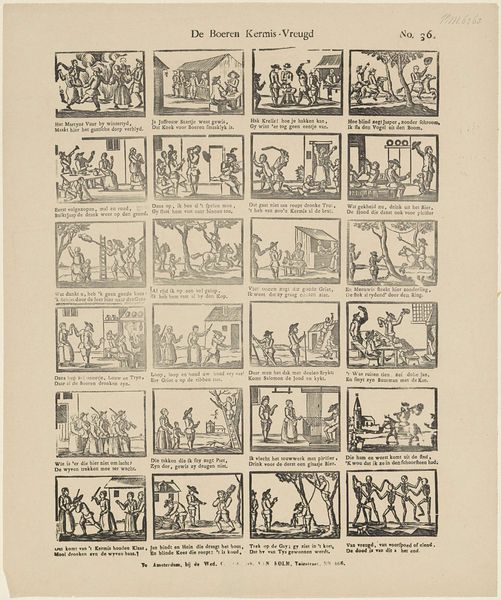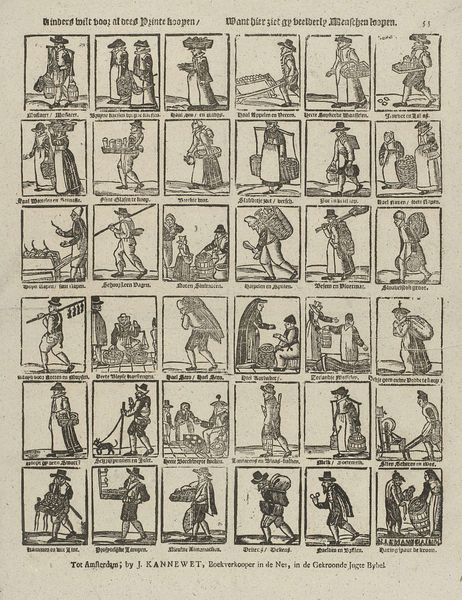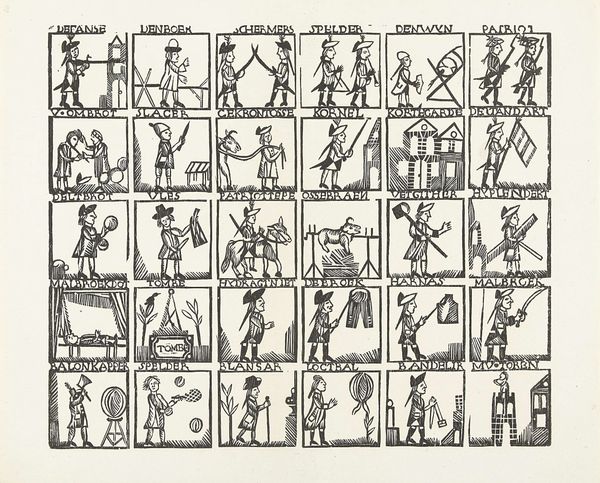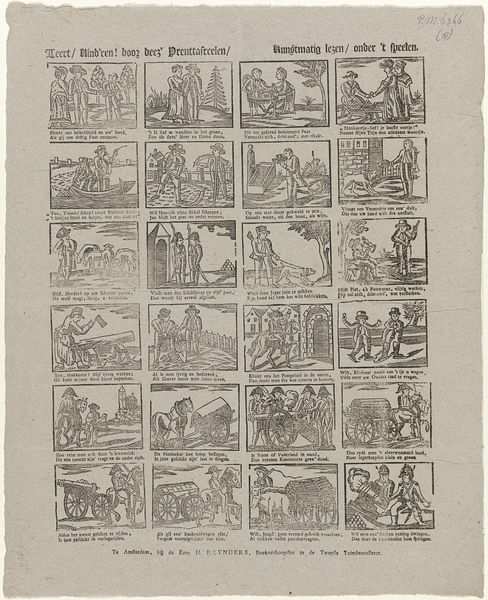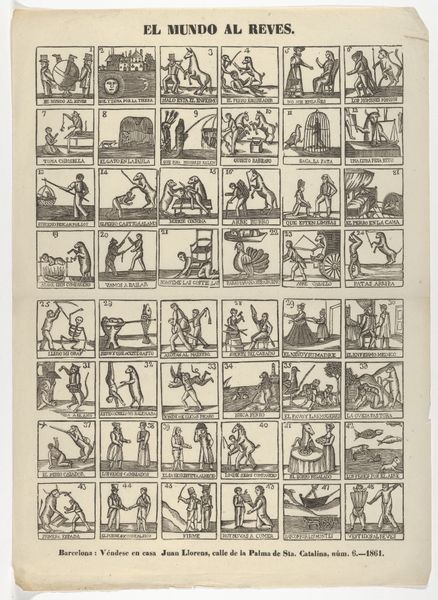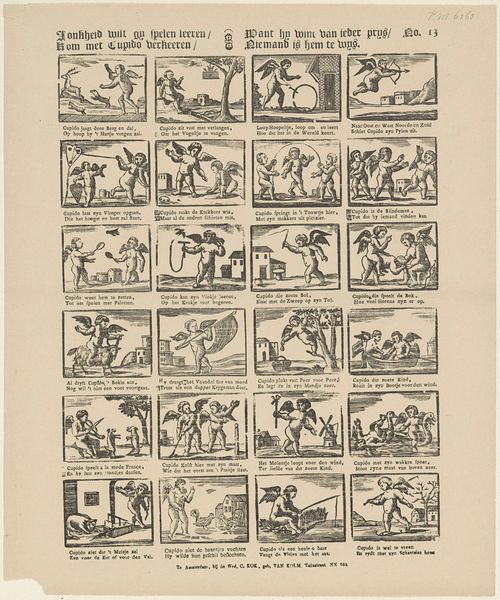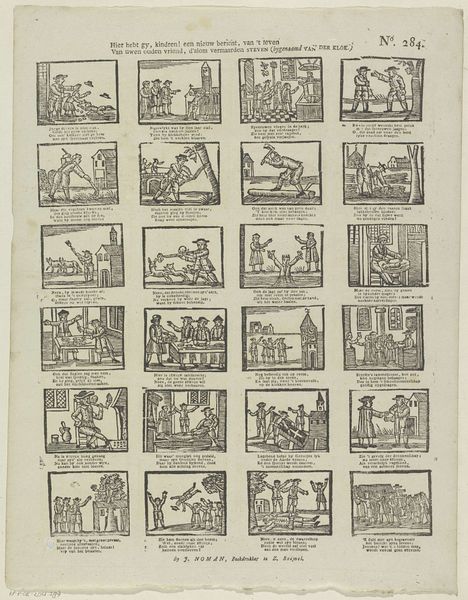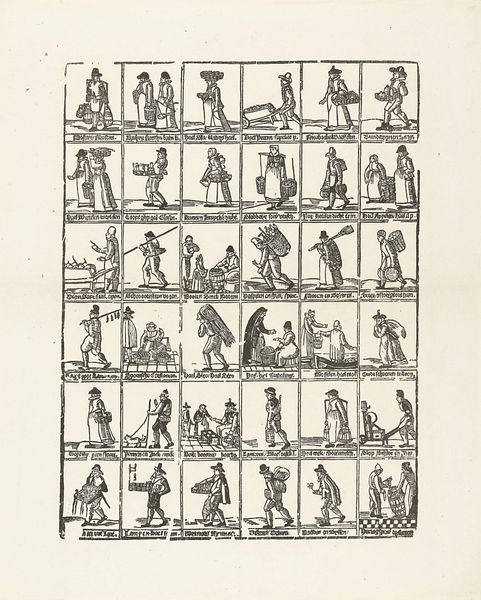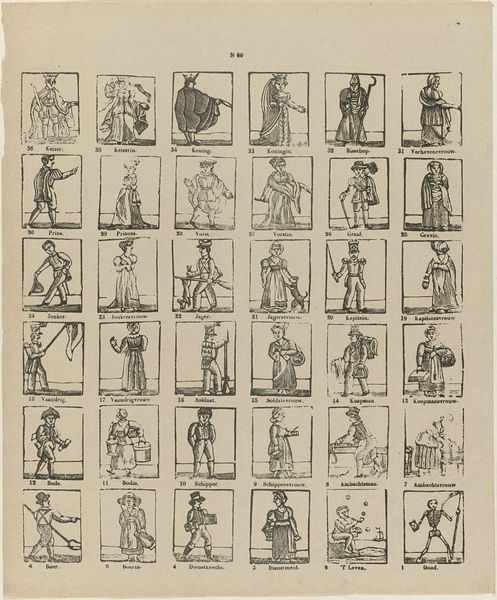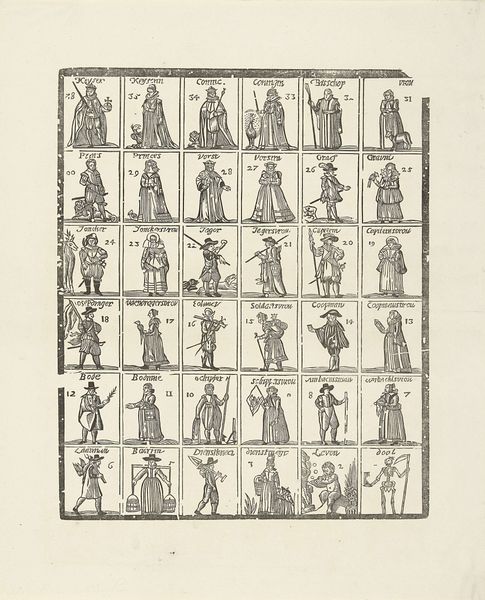
drawing, graphic-art, print, paper, ink, engraving
#
drawing
#
graphic-art
#
medieval
#
narrative-art
# print
#
paper
#
ink
#
genre-painting
#
engraving
Dimensions: height 447 mm, width 363 mm
Copyright: Rijks Museum: Open Domain
Curator: Let's discuss this print titled "Den Ghendtschen Ommeganck." It's currently housed at the Rijksmuseum. It's attributed to van der Haeghen and likely dates anywhere from 1700 to 1865. It combines drawing and engraving techniques, primarily using ink on paper. Editor: Immediately, I see a narrative unfurling—a series of vignettes, almost like a comic strip. The figures, while rudimentary, evoke a very specific feeling, something bordering on the macabre but with a sense of folkloric whimsy. I’m also drawn to the repetitive use of the square frames; they're not just containers for the image but actively structure how we, as viewers, engage with each scene individually. Curator: The scenes likely depict parts of a historical pageant or a series of allegorical figures—almost a procession, as the title suggests. The material constraints of printmaking certainly played a role. The use of line engraving, cross-hatching, must have influenced the visual style of each of these small compositions, relying on simplified forms to tell complex stories. The artist's labor in replicating this many scenes to create multiple copies is interesting. Editor: And think about the enduring nature of these images—consider the symbolic weight that carriages, soldiers, or even what appears to be devils carry across centuries! Note "De Justitie", or justice - the image speaks to an immediate recognition, doesn’t it? What’s being signified here continues to hold power, I think. The unicorn imagery, or ‘Den Eenhoorn’ connects directly to broader systems of European heraldry, legend, morality and fantasy, its depiction and function constantly altered over decades. Curator: True. And while we contemplate these symbols, let's not overlook the materiality, that cheap reproduction. This piece had to be somewhat accessible, destined for distribution and display. It raises a crucial question, does the value of this work depend on the context of that social element, this wide dispersion of information to a group that likely were not usually patrons of artwork? It creates this unique intersection of art, labor and distribution. Editor: The image makes us consider the journey that the icon has been on. This "Ommeganck" print does more than just decorate; it performs a cultural function by transmitting shared beliefs across generations through carefully chosen imagery, each with an easily understandable moral concept. Curator: Yes. I find myself considering the process of art-making within an era, considering the distribution capabilities and constraints of accessible imagery to broader audiences and the significance of the images chosen for that dispersal. Editor: For me, it’s that echoing impact, the recognition of historical iconography—it speaks volumes, connecting us not only to a historical time, but revealing the values of a culture as passed down over the years.
Comments
No comments
Be the first to comment and join the conversation on the ultimate creative platform.
